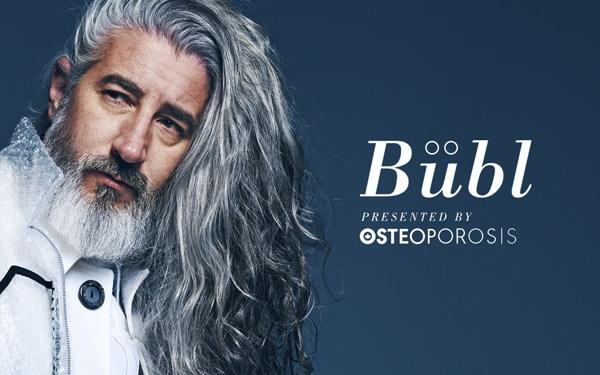
Osteonecrosis of the Jaw

Osteonecrosis of the Jaw
A number of recent medical reports have linked high doses of intravenous bisphosphonates given to patients for the treatment of multiple myeloma, breast cancer or other cancers, to a condition known as Osteonecrosis of the Jaw (ONJ).
Osteonecrosis of the Jaw typically appears as an area of exposed bone in the upper and/or lower jaw that does not heal after a period of 6 weeks. It may or may not be painful. Most cases have occurred in patients with past or ongoing treatment with intravenous bisphosphonates, usually in high doses for treatment of cancer. Many of these individuals have been on other medications for their cancer. It appears that in addition to the bisphosphonate therapy, most have undergone some dental work such as tooth extraction or dental implants or treatment for an oral infection or had other local trauma to the oral cavity prior to the development of ONJ. In a few individuals, there was no history of dental work or injury prior to the occurrence of ONJ. It is reported that individuals who develop ONJ have been on bisphosphonates for some time (the average duration of treatment was approximately 2 years) prior to the development of the lesions. ONJ is treated by dentists or dental surgeons with local treatment to the mouth such as rinces, antibiotics and local surgical procedures.
Oral bisphosphonates, such as alendronate (Fosamax®), etidronate (Didrocal®) and risedronate (Actonel®) are often used in the treatment of osteoporosis. Infrequently, intravenous bisphosphonates such as pamidronate or zoledronate are also used in the treatment of osteoporosis.
A smaller number of ONJ cases have been reported in patients receiving oral bisphosphonates for the treatment of osteoporosis and/or Paget’s Disease. These cases are quite rare and estimated to occur in between 1 in 10,000 and 1 in 100,000 of patients taking oral bisphosphonates for osteoporosis. Unfortunately, limited information is available about the dose and duration of bisphosphonate therapy and the general health of the patients who developed ONJ while on treatment for osteoporosis or Paget’s Disease.
To date there have been no reports of this condition in association with other medications used in the treatment of osteoporosis namely calcium, vitamin D, raloxifene (Evista®), calcitonin (Miacalcin®) and teriparatide (Forteo®).
The reports of ONJ in patients with osteoporosis have caused great concern among health care professionals and patients alike.
Clinical Recommendations
At present, there is simply not enough medical information to prepare fact-based guidelines for the prevention and treatment of ONJ in patients taking oral bisphosphonates for treatment of osteoporosis or Paget’s Disease. The risk of developing ONJ with oral bisphosphonates is known to be very low (between 1 in 10,000 and 1 in 100,000), however it would be prudent for patients on oral bisphosphonates for osteoporosis to consider the following:
- Maintain good oral hygiene by regular visits to your dentist and dental hygienist. This advice is the same for everyone whether or not you are on a bisphosphonate.
- Report any oral or dental problems to your dentist and to your physician. This would include pain, swelling, problems with your gums or loosening of your teeth.
- Inform your dentist or dental surgeon that you are on a bisphosphonate. Should your dentist be concerned about this treatment and your dental health, he/she may contact your physician.
- Some health care professionals recommend stopping bisphosphonates for several weeks before and after invasive or traumatic dental work (such as tooth extraction or dental implant). Currently, there is no proof that this will help prevent ONJ. However, given the long term benefits of bisphosphonates to bones, it is unlikely that stopping these medications temporarily will have any adverse impact on the treatment for osteoporosis. Always be sure to check with your own doctor first.
- Routine dental work such as dental cleaning, fillings or root canals have not been reported to increase the risk of ONJ.
- ONJ does not cause any problems with the jaw joint. If you experience pain, snapping or cracking in the jaw joint, this is not related to ONJ nor to your bisphosphonate.
- Remember, the osteoporosis medication was prescribed to help you prevent a fracture (broken bone). You are much more at risk of suffering a fracture than to ever develop ONJ. The benefits to you are much greater than possible risks from these medications. You should always discuss with your physician prior to stopping/changing your osteoporosis medication.
For the Future
Further research is needed to better understand the incidence and mechanism of ONJ, and to identify specific patient risk factors which would predispose some individuals to ONJ when these drugs are used in the recommended doses for treatment of osteoporosis and/or Paget’s Disease.
Because of the urgency to clarify how and by what mechanism ONJ occurs, the American Society of Bone and Mineral Research (ASBMR), has initiated a forum that would bring together physicians, oral surgeons, dentists and scientists with expertise in key areas of the disease, to address this clinical problem and together, provide further guidance into best clinical practices. The Scientific Advisory Council of Osteoporosis Canada supports this endeavour.
Osteoporosis Canada will update this statement when new information becomes available.
Further reading
>> Article written by the American Society of Bone and Mineral Research on Osteonecrosis of the Jaw (ONJ). It is felt this article reflects the current and most up to date research on this subject that has currently made news headlines linking ONJ with use of bisphosphonates.
Scientific Advisory Council
Osteoporosis Canada’s rapid response team, made up of members of the Scientific Advisory Council, creates position statements as news breaks regarding osteoporosis. The position statements are used to inform both the healthcare professional and the patient. The Scientific Advisory Council (SAC) is made up of experts in Osteoporosis and bone metabolism and is a volunteer membership.


